What are Those Little Caterpillars on my Sunflowers, Coneflowers, and Black-Eyed Susans?
Views: 10658
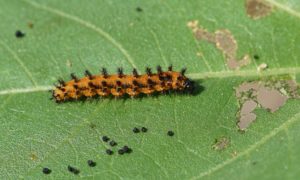
What are those little caterpillars on my sunflowers, coneflowers, and black-eyed Susans? Summer is when gardeners often start seeing them in great numbers. Some people may even be afraid they’ll lose their plants to these tiny terrors and wonder how to control them.
The Good News Is…
If they aren’t killed or eaten by birds or other predators, these caterpillars will turn into beautiful butterflies. Several butterfly species use these plants as host plants (specific plants that their caterpillars will eat). And, because these plants and butterflies have evolved together, the plants have adapted to being eaten without dying.
Admittedly, I have lost a few coneflowers over the years, but that was before I planted them in numbers. If you have enough native plants in your landscape, you’re unlikely to lose many, if any, to caterpillars. So, a good defense against caterpillars is to plant more plants. Remember, too, that pesticides are indiscriminate. They’ll kill your caterpillars and everything else, including pollinators and other beneficial insects.
When caterpillars decimate them, my black-eyed Susans look almost ghostly. But I leave them until they’ve finished blooming to ensure they’ve reseeded, and then I cut down the unsightly foliage. They always come back next spring, often in greater numbers. Since I plant my gardens to support butterflies and other insects, I don’t mind sharing my plants with caterpillars to ensure fabulous photo ops weeks later when the butterflies emerge.
What are Eating My Sunflowers?
Helianthus sp., sunflowers, host several butterfly species, including:
- Gorgone checkerspots
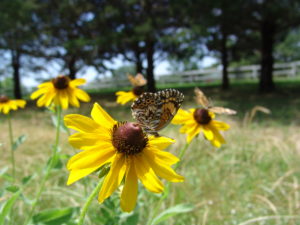
Gorgone checkerspot
- Silvery checkerspots

Silvery checkerspot
- Ladies (I’ve seen both painted ladies and American ladies listed, or only one or the other, depending on the website/source. I think it’s likely both species lay eggs on sunflowers.)
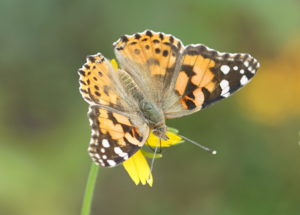
Painted lady
- Bordered patches
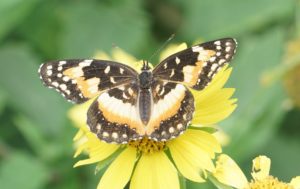
Bordered patch
What are Eating My Coneflowers?
In my yard, it is usually silvery checkerspot caterpillars eating my coneflowers. But gorgone checkerspot caterpillars will also eat them, as I discovered two weeks ago.
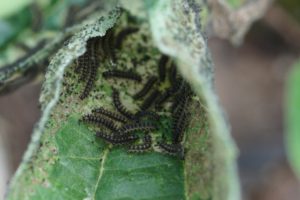
In most cases, damage like this will not kill the plant. These are probably silvery checkerspot caterpillars.
What are Eating My Black-Eyed Susans?
Many of the same butterflies that use sunflowers and coneflowers for host plants will also lay their eggs on black-eyed susans and other rudbeckia species. These include silvery checkerspots, bordered patches, and gorgone checkerspots.
Meet Leslie Miller
Leslie Ann Miller shares 3.5 acres in rural Oklahoma with birds, butterflies and wide variety of animals. She is currently transforming her yard with plantings…
Leslie's Recent Posts

Preparing Your Wildlife Garden for Winter






